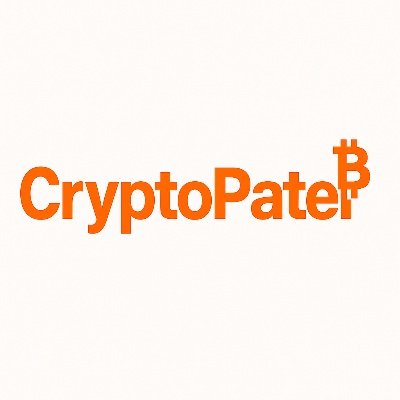Optimism price
in USDAbout Optimism
Disclaimer
OKX does not provide investment or asset recommendations. You should carefully consider whether trading or holding digital assets is suitable for you in light of your financial condition. Please consult your legal/tax/investment professional for questions about your specific circumstances. For further details, please refer to our Terms of Use and Risk Warning. By using the third-party website ("TPW"), you accept that any use of the TPW will be subject to and governed by the terms of the TPW. Unless expressly stated in writing, OKX and its affiliates (“OKX”) are not in any way associated with the owner or operator of the TPW. You agree that OKX is not responsible or liable for any loss, damage and any other consequences arising from your use of the TPW. Please be aware that using a TPW may result in a loss or diminution of your assets. Product may not be available in all jurisdictions.
Optimism’s price performance
Optimism in the news
Aerodrome and Velodrome, the leading decentralized exchanges on Base and Optimism respectively, will merge into...
Bitcoin steadied above $100,000 after two weeks of losses, while altcoins rallied on expectations that President Trump’s proposed $2,000 tariff dividend could inject retail liquidity into the market.
HBAR slid 4.2% as heavy technical selling erased ETF-driven gains, with traders prioritizing short-term chart signals over long-term optimism.
Robinhood was leading among the exchanges and Trump-affiliated American Bitcoin was higher by 10% after adding to its bitcoin stack.
Optimism on socials
Guides

Optimism on OKX Learn
Optimism FAQ
Optimism, also known as Optimistic Ethereum (OE), is a Layer 2 scaling solution for Ethereum that aims to increase transaction throughput and reduce fees without sacrificing security and decentralization.
Optimism improves Ethereum’s scalability through the use of optimistic rollups. These rollups are a Layer 2 solution that perform most computation off-chain while keeping the same level of security as the main Ethereum network.
Easily buy OP tokens on the OKX cryptocurrency platform. Available trading pairs in the OKX spot trading terminal include OP/USDT and OP/USDC.
Alternatively, you can swap your existing cryptocurrencies, including XRP (XRP), Cardano (ADA), Solana (SOL), and Chainlink (LINK), for OP with zero fees and no price slippage by using OKX Convert.
Dive deeper into Optimism
To tackle scalability issues and high transaction costs on the Ethereum network, Optimism has emerged as a compelling Layer 2 solution. Functioning as an off-chain network layered on top of Ethereum, Optimism extends the capabilities of the blockchain. Fueled by its native token OP, the platform aims to alleviate Ethereum's challenges and enhance its performance.
What is Optimism
Optimism (OP), also known as Optimistic Ethereum (OE), is a Layer 2 solution built to address the scalability issues of the Ethereum network. At its core, Optimism utilizes a technology known as optimistic rollups. This technology bundles, or rolls up, multiple transactions into a single transaction, significantly improving the speed and cost of transactions. As Optimism is built on top of Ethereum’s architecture, developers and users can make use of the speedy and low-cost transactions whilst having the security of the Ethereum blockchain.
The Optimism team
The Optimism team comprises a group of dedicated blockchain experts, including Jaynti Kanani, Jinglan Wang, Ilya Polosukhin, Ben Jones, Paul Hauner, and Matteo Rizzi.
How does Optimism work
When a user initiates a transaction, it's executed on the Optimism network rather than directly on the Ethereum mainnet. Throughout this process, Optimism maintains communication with Ethereum's Layer 1 and leaves the original network unchanged. This is achieved through optimistic rollups, which consolidate multiple transactions into a single batch submitted to Ethereum.
By adopting this approach, the computational burden on the Ethereum mainnet is lessened, resulting in faster transaction speeds and lower gas fees. Ultimately, Optimism plays a pivotal role in alleviating strain on the Ethereum network, consequently reducing congestion and associated high fees.
Optimism’s native token: OP
OP is the token of the Optimism ecosystem, crucial in securing and powering the Optimism network. The token also serves as incentivizes and rewards for validators who correctly process and confirm transactions. Validators are able to stake OP tokens as collateral, which can be confiscated if they act maliciously.
OP tokenomics
There is a maximum supply of 4,294,967,296 OP tokens. The supply of OP tokens is carefully controlled and released into the market via strategic allocation methods such as staking rewards, developer incentives, and ecosystem grants. This approach ensures a balanced and sustainable distribution of tokens, maintaining the long-term stability and health of the Optimism ecosystem.
OP use cases
The primary purpose of the OP token is governance. This encompasses various essential functions, including allowing token holders to cast votes pertaining to proposed updates to the protocol as well as distribution of incentives for projects through the Governance Fund. Additionally, it facilitates the funding of projects hosted on the Optimism platform. OP holders are also allowed to engage in project management alongside other OP Citizens.
Distribution of OP
OP’s distribution is as follows:
- 25 percent: Ecosystem fund
- 20 percent: Retroactive Public Goods Spending (RetroPGF), an experimental spending mechanism designed to align with OP's objective of equating impact with profit.
- 19 percent: Airdropped to the community
- 19 percent: Awarded to core contributors
- 17 percent: Given to investors
Optimism: The road ahead
On the project's horizon is the launch of a public mainnet, marking a significant milestone that will elevate Optimism's capabilities. Looking ahead, Optimism aims to become the leading Layer 2 scaling solution for Ethereum. The project envisions a future where Ethereum's transaction processing capabilities skyrocket to millions per second while upholding its foundational principles of security and decentralization.











































